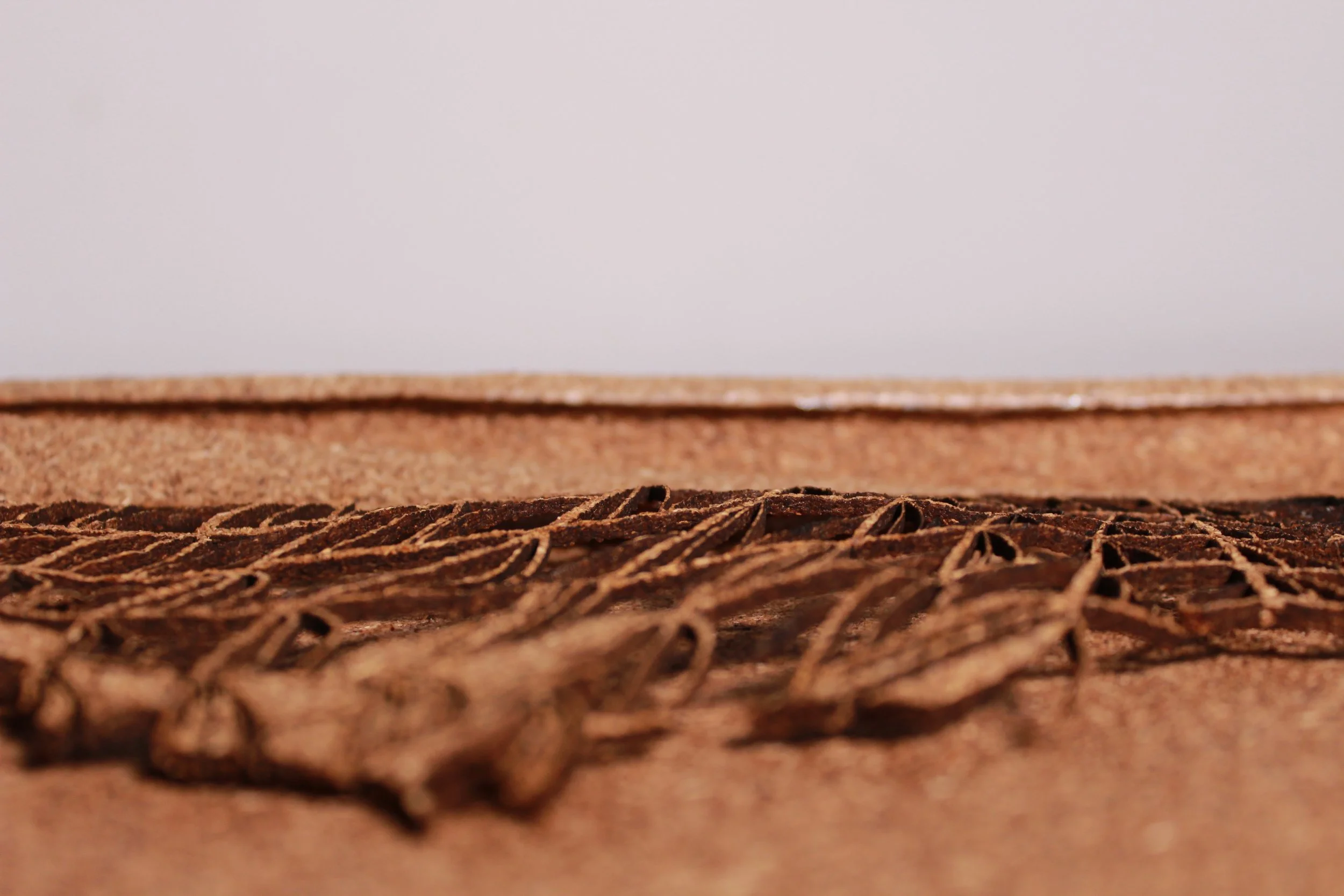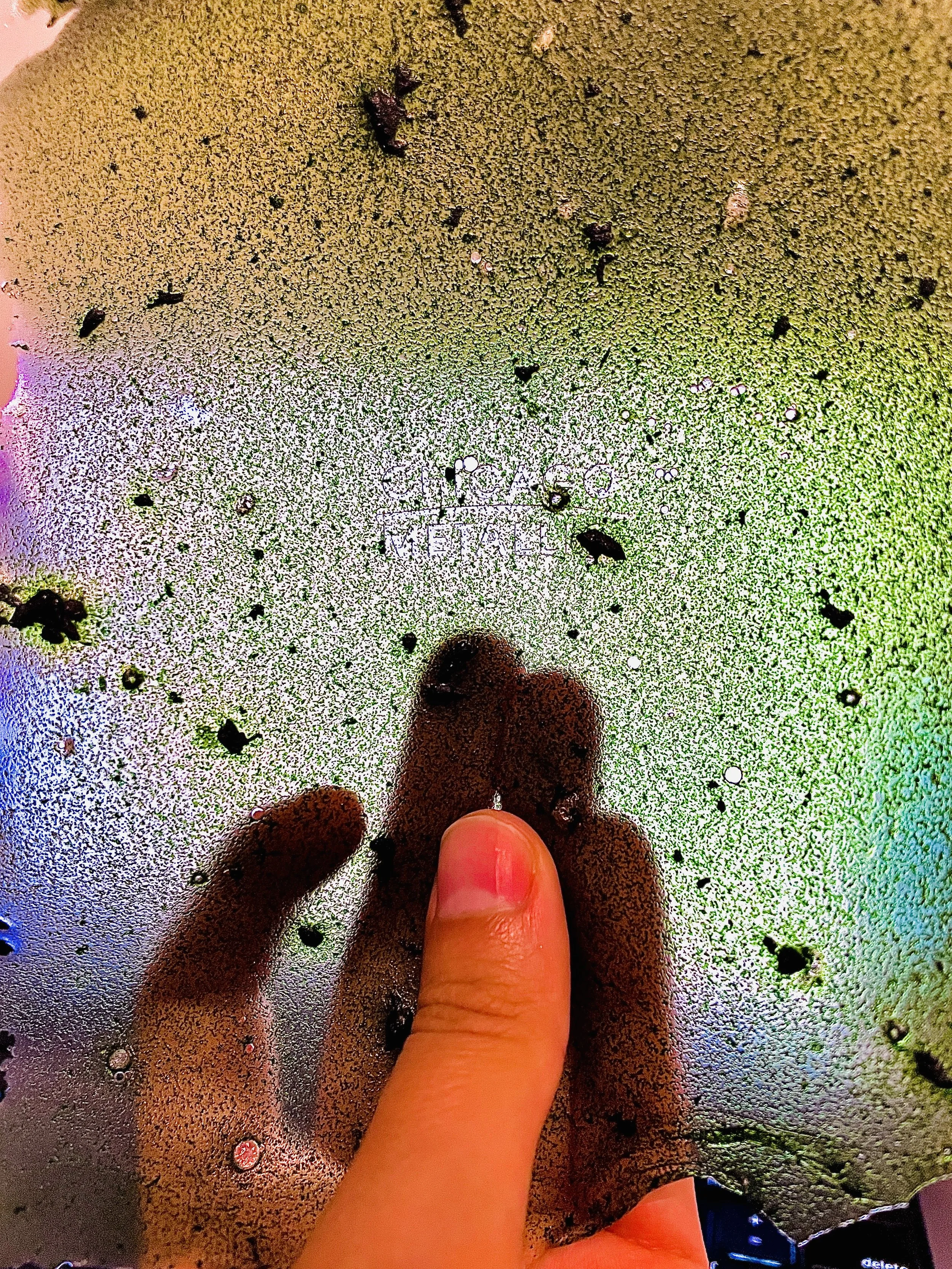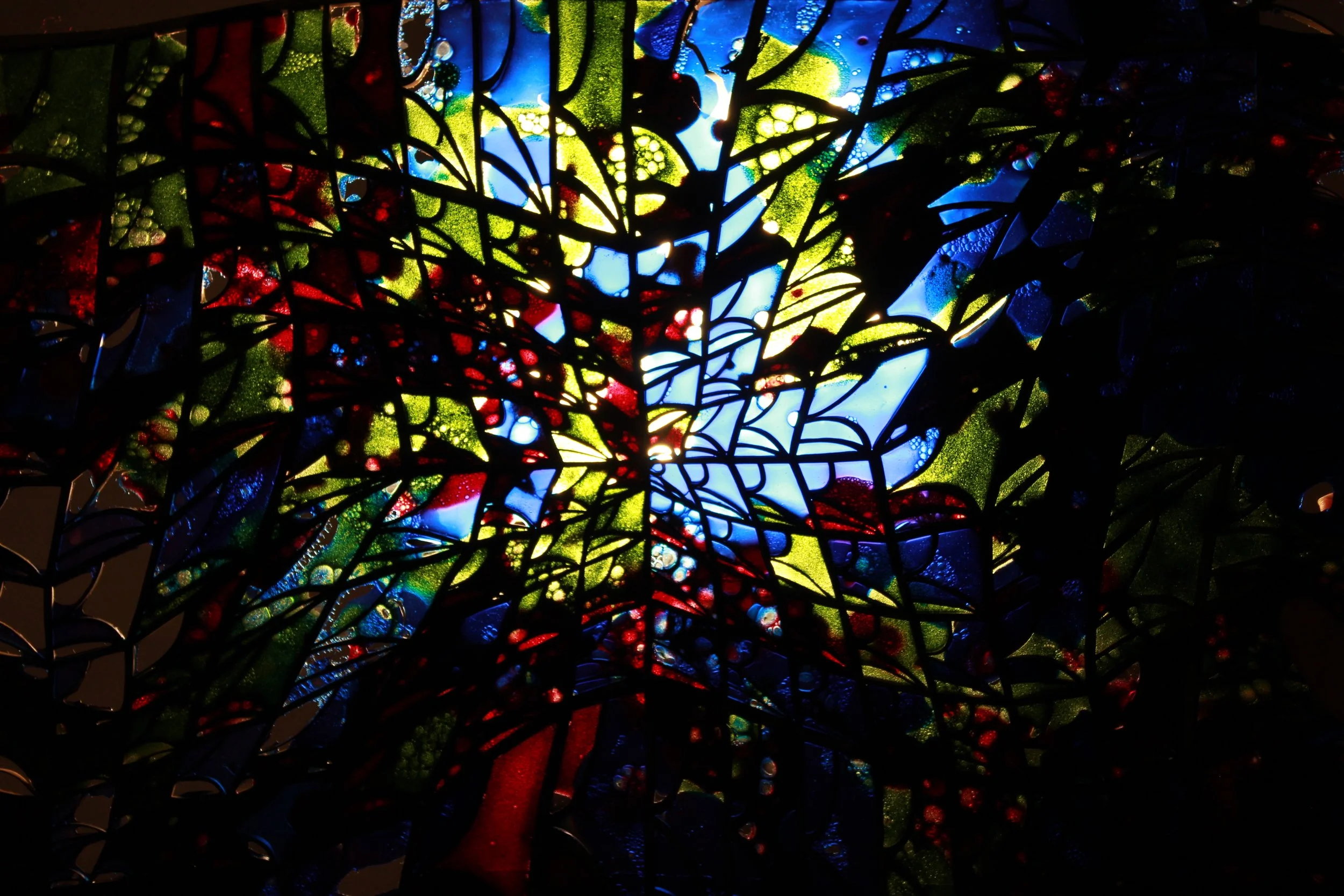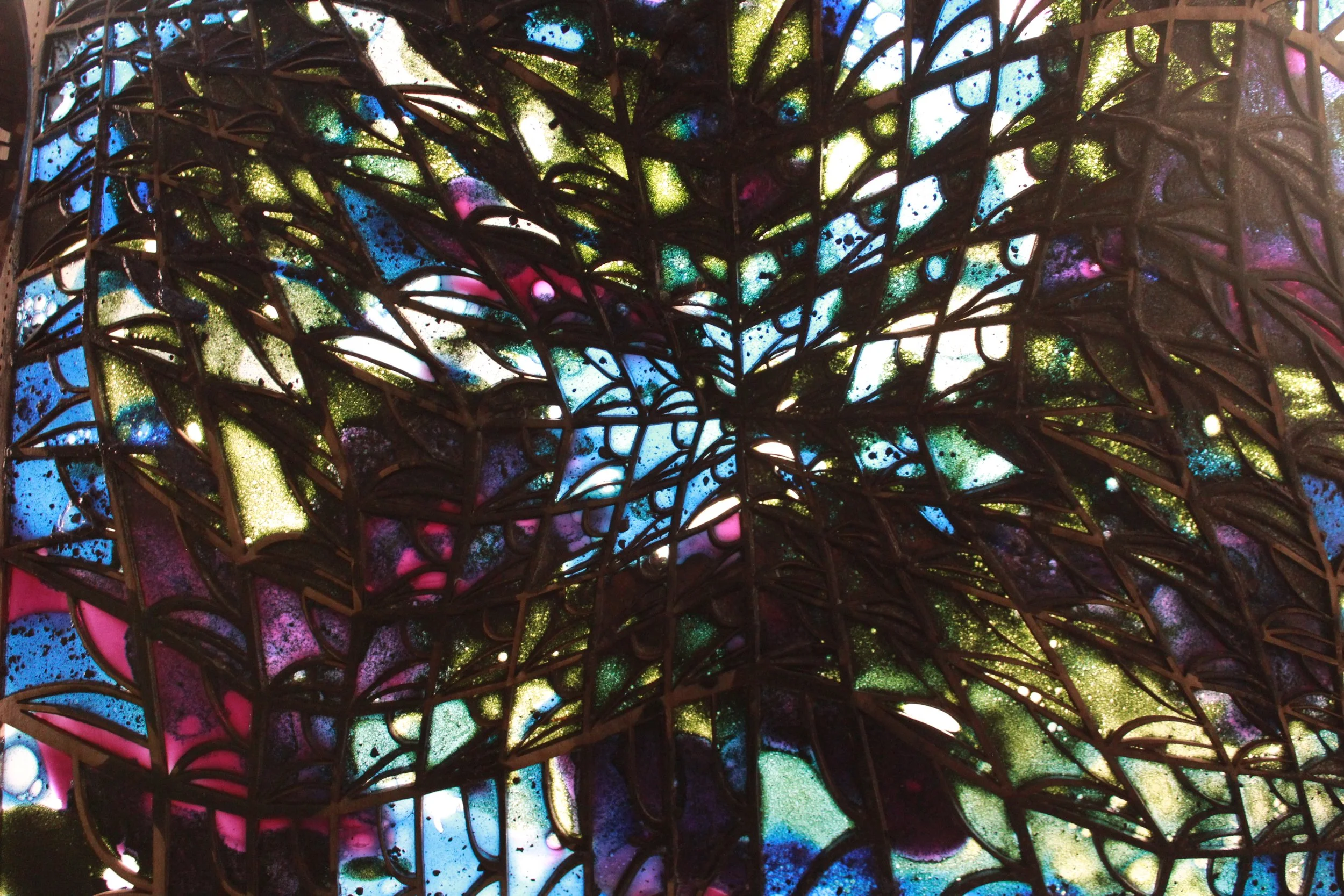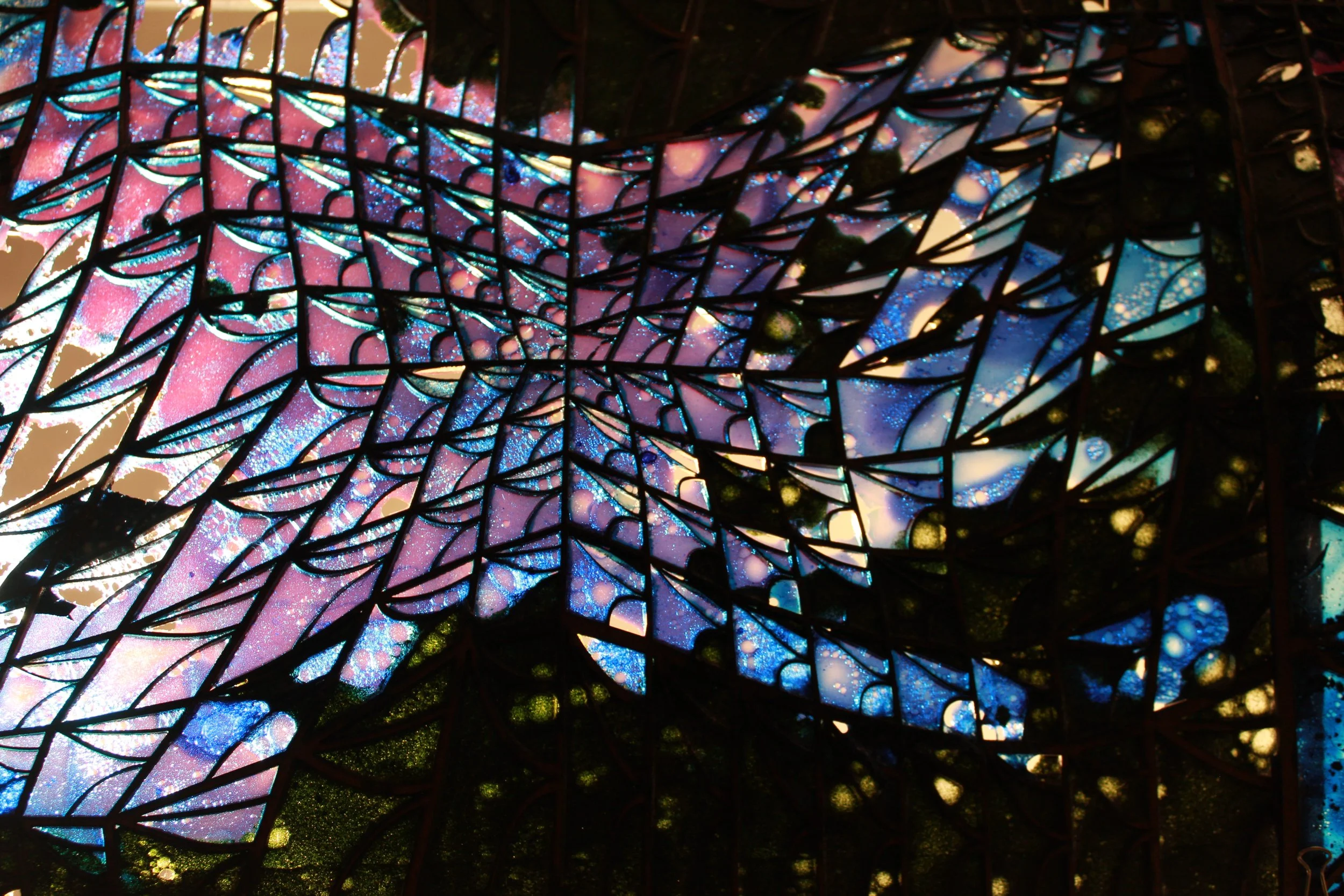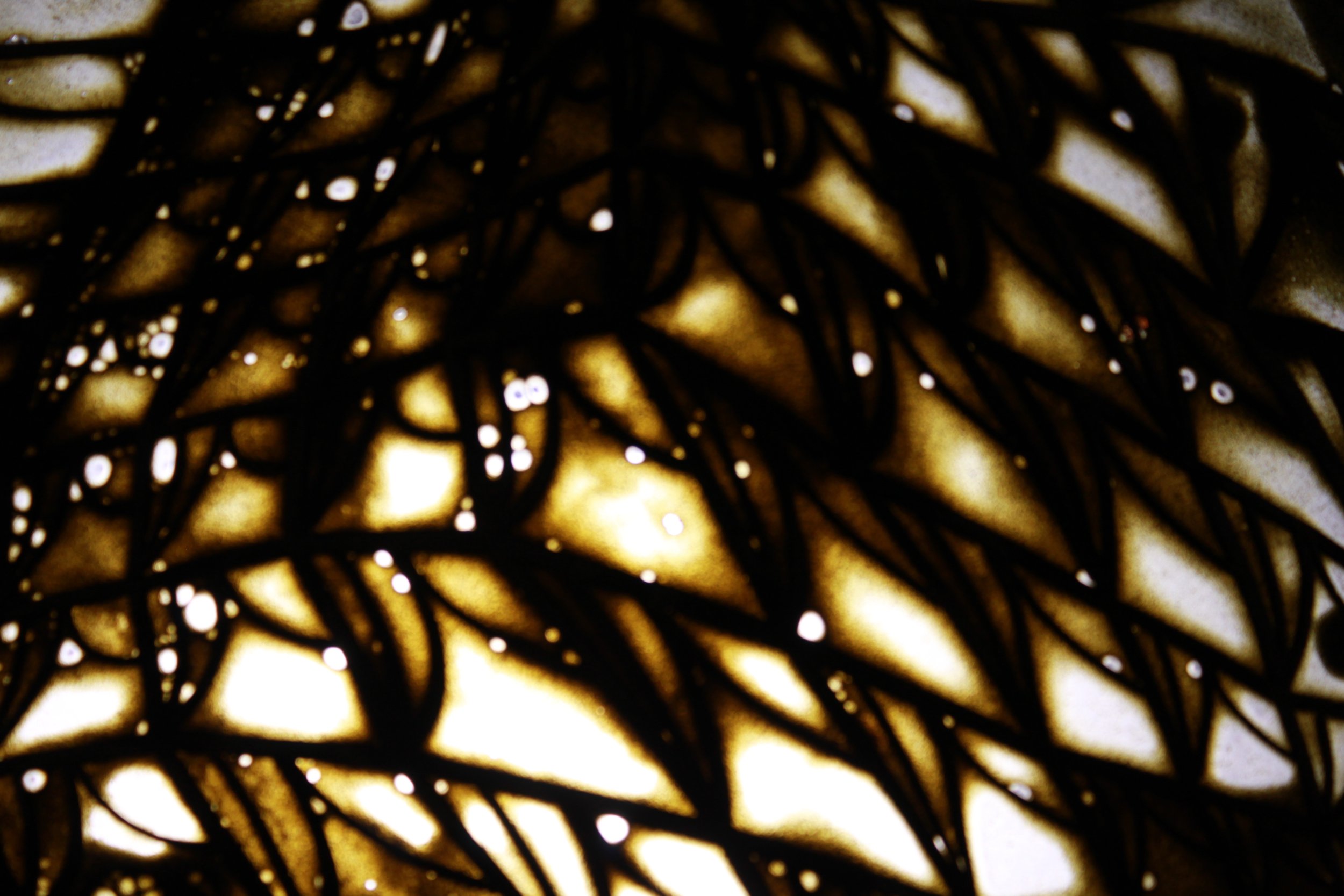Stained Glass Bioplastics:
Repurposing Invasive Species and Food Waste
Stained Glass Bioplastics:
Repurposing Invasive Species and Food Waste
Kimberly Blacutt, Audrey Reiley, Jessica Wu, Tobi Aina
Carnegie Mellon School of Architecture
Course - Shaping the Built Environment
Professor - Dana Cupkova
This project investigates repurposing invasive species, such as Japanese knotweed and spirulina algae, into ecologically conscious biomaterials for experimental architecture. These species pose ecological threats, and their removal offers environmental benefits. Initial experiments used spirulina-based bioplastic panels, resembling stained glass, and expanded to incorporate pigments from red cabbage and beet. Future iterations explore casting bioplastics into laser-cut knotweed sheets or transforming the plant into fibrous materials and cork-like bricks. By integrating ecological restoration with design, this research demonstrates aesthetic and functional possibilities, inspiring sustainable practices and fostering community engagement by redefining invasive species as valuable resources rather than waste.
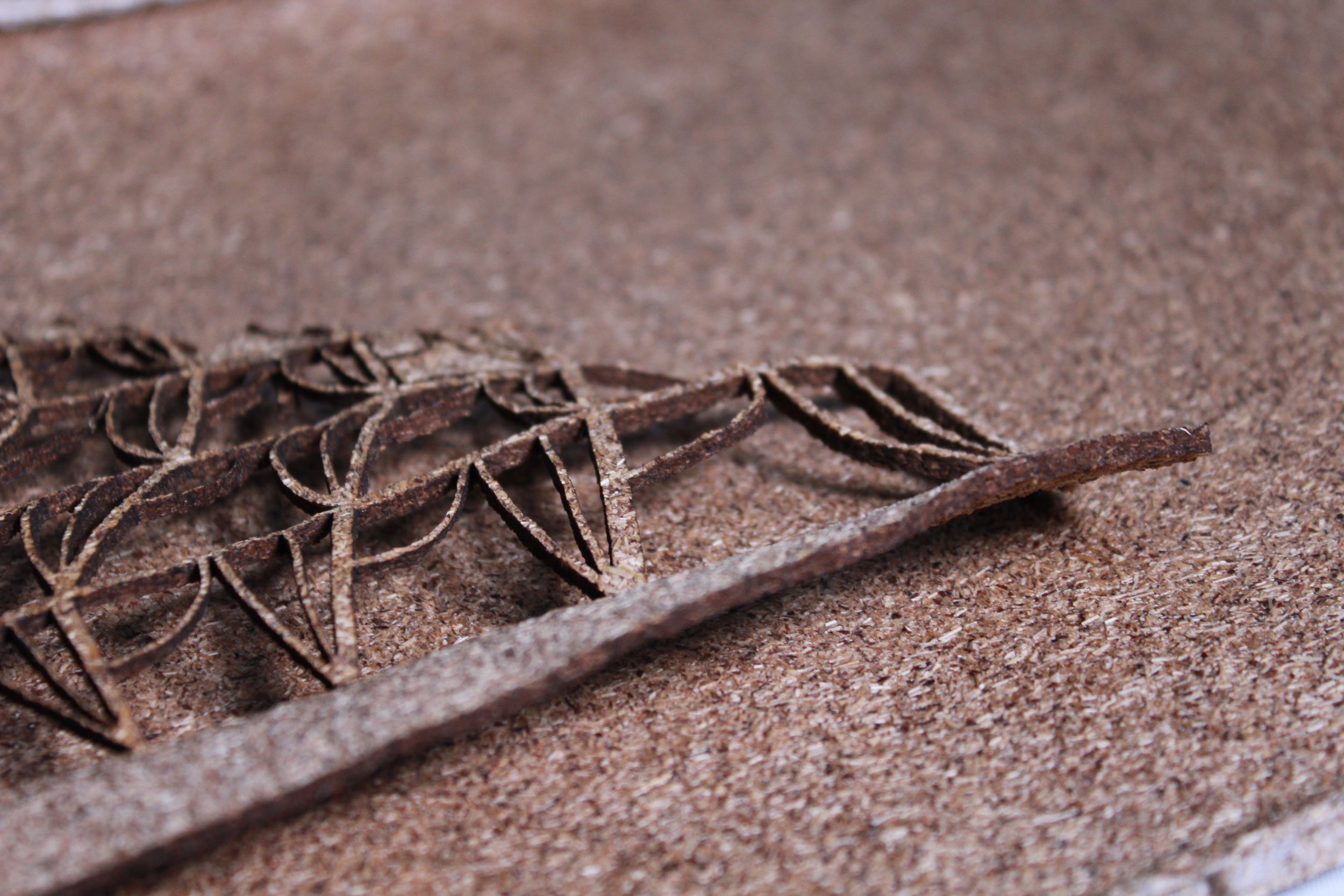
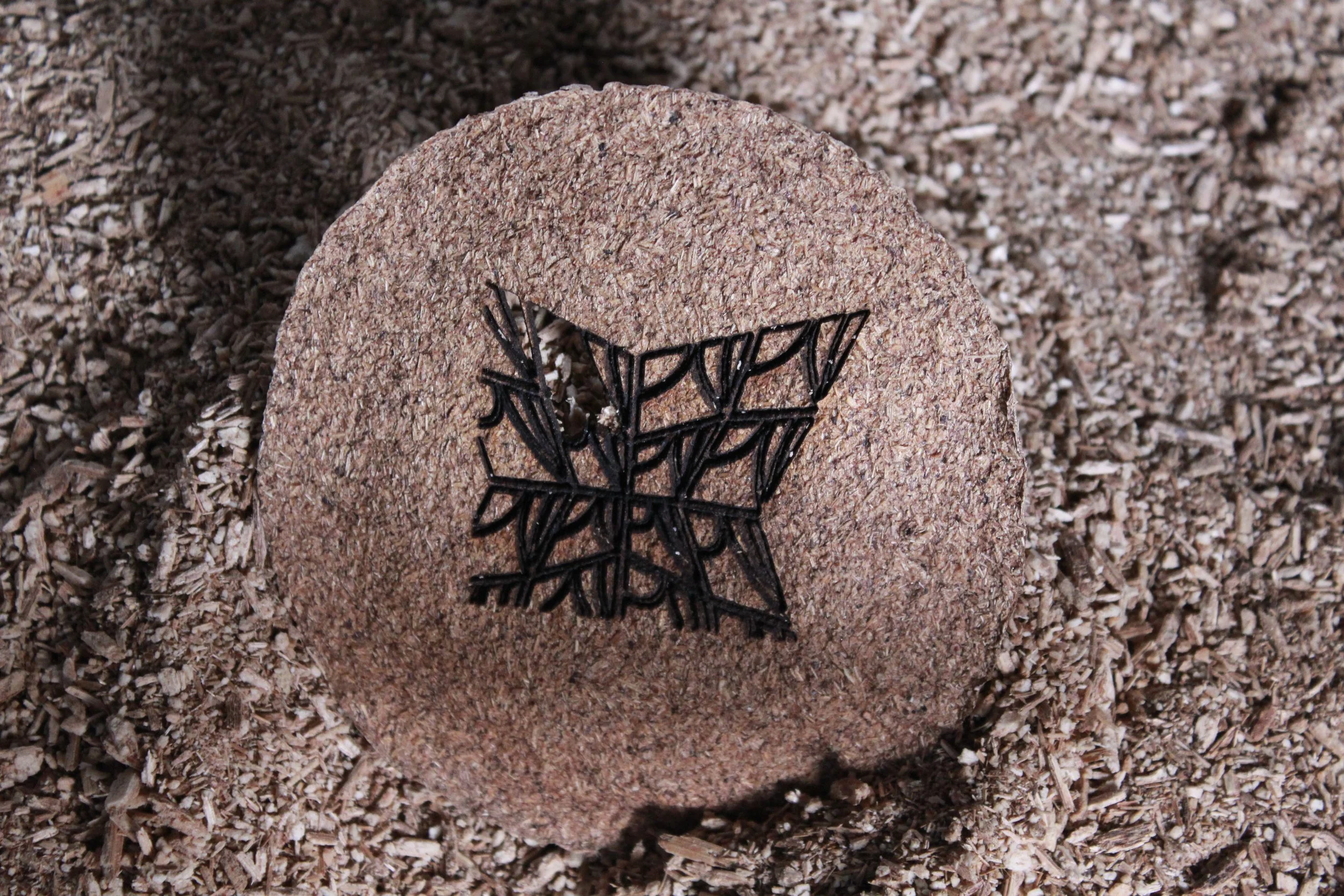
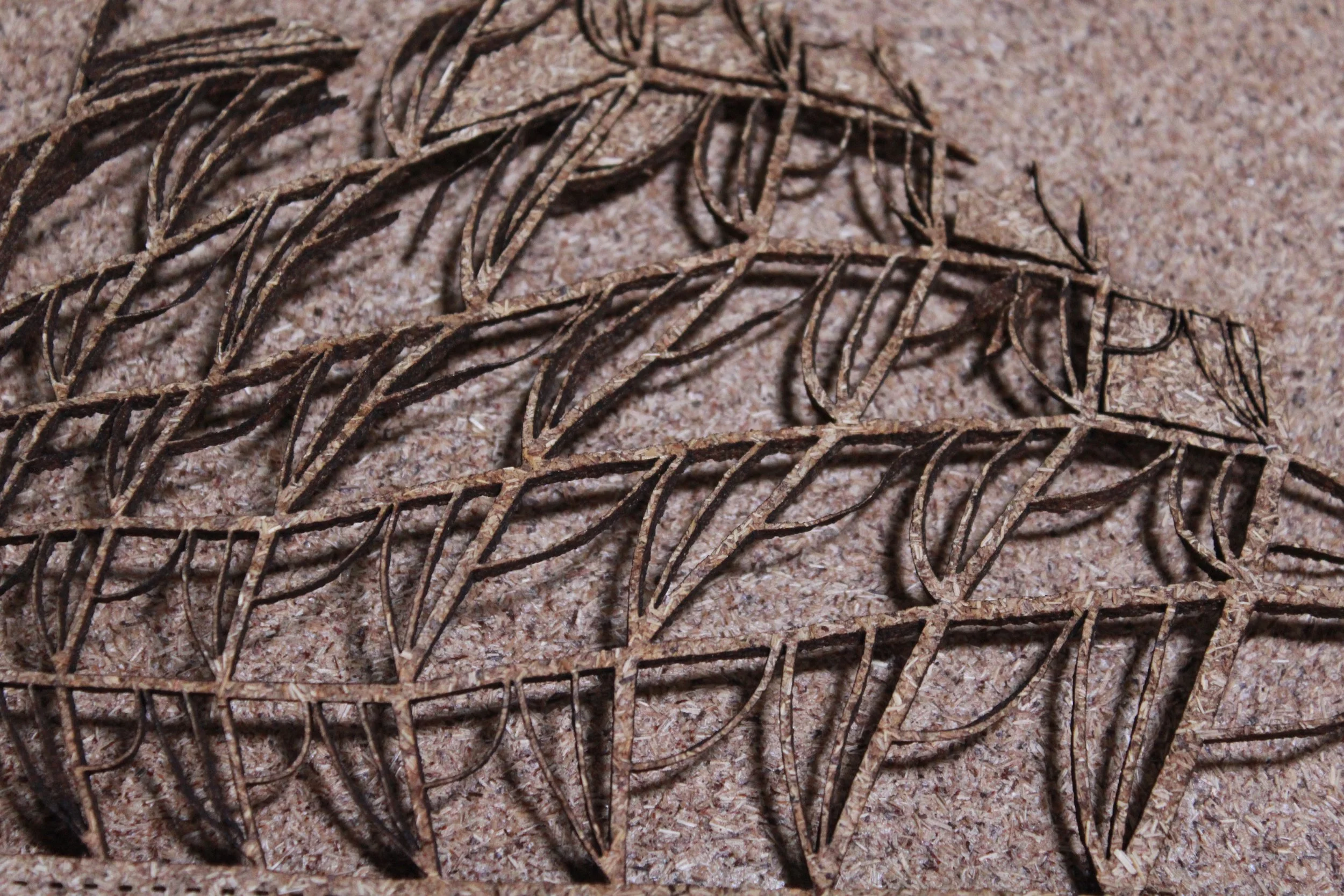
GREEN SPIRULINA BASED BIOPLASTIC
10 g of green spirulina powder
5 g of glycerin
50 g of water
12 g of gelatin
4 g of sugar
KNOTWEED SHEETS
10 grams of knotweed
4 grams corn starch
4 ml vinegar
4 ml glycerin
40 ml water
3 grams of gelatin
the future of the built environment & AN interdisciplinary approach
Working with biomaterials, such as food waste or invasive species, can shift perspectives on waste as a resource. Developing recipes and testing applications for biomaterials can expand possibilities for sustainable design and encourage people to repurpose their own food waste or remove invasive species by revealing their potential value in construction materials, and other products.
Biotechnology encourages an interdisciplinary approach. Creating biomaterials involves applying principles of chemistry to define material properties. Shaping biomaterials incorporates methods from architecture and industrial design, alongside inspiration from historical technologies and traditional crafts.
